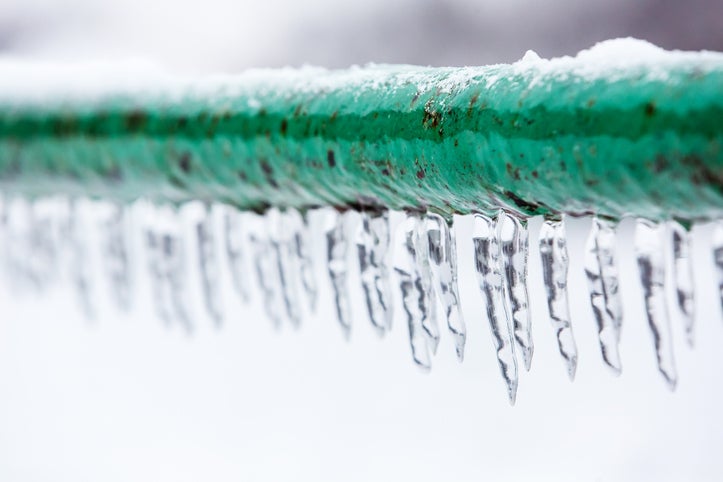A Frozen Pipe – Now What?

An arctic blast is bound to happen at least once every winter in New Jersey. Are you prepared for the possibility of frozen pipes? It’s best to prevent pipes from freezing in first place by insulating your plumbing, sealing air leaks in unconditioned spaces where pipes are located, and allowing a continuous trickle of water to run on the coldest winter nights.
When your efforts aren’t enough to prevent ice from forming, follow these tips to safely thaw a frozen pipe.
Determine if You Have a Frozen Pipe
You’ll know there’s a problem if you turn on a faucet and little or no water comes out. If this happens when it’s well below freezing outside, a frozen pipe is a likely culprit. Take action now to ensure this problem doesn’t cause costly water damage to your home.
Shut Off the Water
When you first discover a frozen pipe, it may be impossible to tell whether it has burst or not. Just to be safe, shut off your main water valve. This way, water won’t pour from the hole in the pipe once you get things flowing again.
Open a Faucet Connected to the Frozen Water Line
This relieves any pressure within the pipe and gives the water a place to flow once you start clearing out the accumulated ice.
Find and Thaw the Frozen Pipe
Uninsulated pipes in unconditioned spaces are the most likely to freeze. Check the plumbing in your attic, garage, unfinished basement and crawlspace. Look for frost on the outside, an indicator of ice inside the pipe. You can also feel exposed pipes with your hands to find spots that feel colder than the surrounding areas.
Once you identify the frozen section of pipe, it’s time to melt the ice. For safety, never thaw a frozen pipe with an open flame, and don’t use electrical devices near water. The following products are safe to use when thawing frozen pipes:
- Hair dryer
- Heat lamp
- Electric heat tape
- Portable electric space heater
- Electric heating blanket or pad
- Towels soaked in hot water
It’s also possible for pipes behind finished walls to freeze. If this happens, you have the following options:
- Turn up the thermostat and wait for the pipe to thaw.
- Tear out part of the wall to access the pipe.
- Thaw the pipe through the wall using an infrared lamp.
- Call a plumber for advice.
Test the Faucets
If the newly thawed pipe seems to be in good condition, turn the water back on and try a few faucets around the house. It’s possible another pipe has frozen that also needs your attention.
If a pipe has burst, or you suspect a leak somewhere, it’s time to call a plumber. Bob Hoegler Plumbing can help you thaw frozen pipes, replace burst pipes and install pipe insulation to prevent a repeat incident. To request plumbing services in Monroe Township, please contact us at 732-521-0133.
RECENT POSTS
categories
Archives
2024
2023
2022
2021
2020
2019
- December (2)
- November (2)
- October (2)
- September (2)
- August (2)
- July (2)
- June (2)
- May (2)
- April (2)
- March (2)
- February (2)
- January (2)

